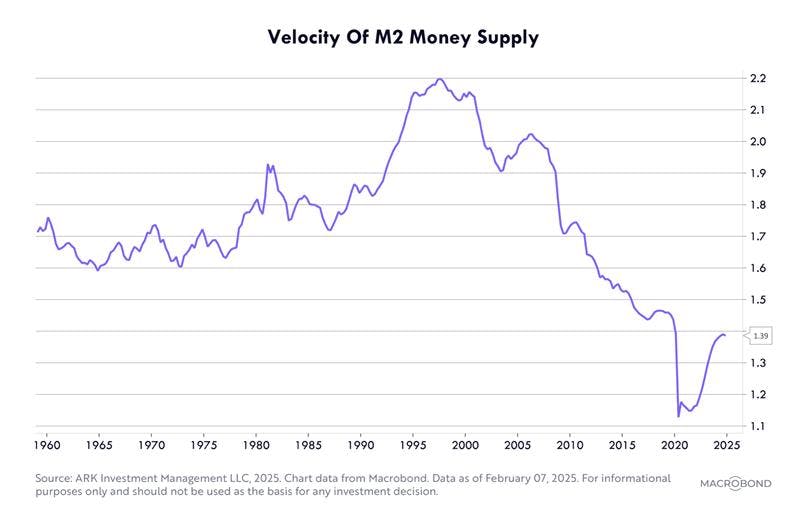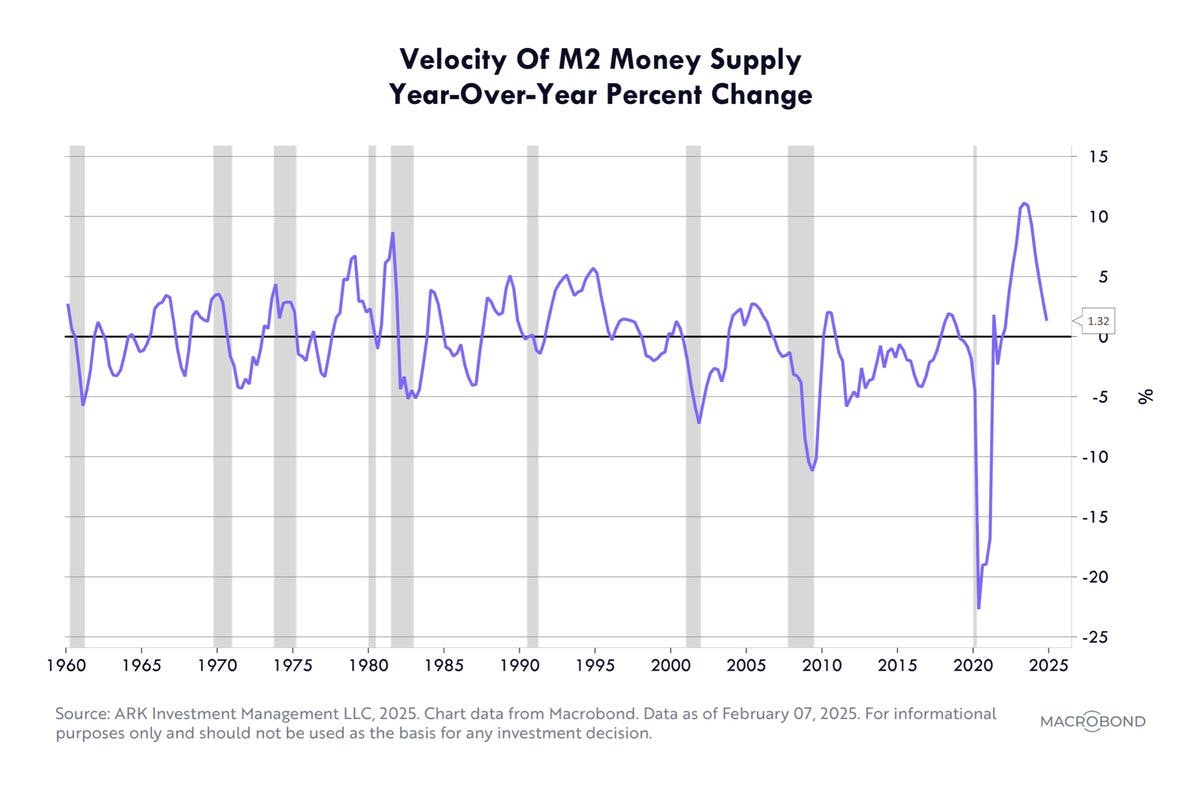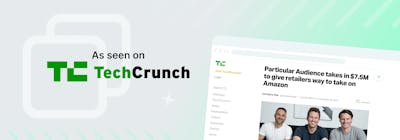M2 money supply is a measure of the total amount of money available in an economy. It includes:
- Cash (currency) in circulation
- Checking deposits (demand deposits)
- Savings deposits
- Money market funds
- Small-denomination time deposits (like certificates of deposit under $100,000)
In short, M2 captures both immediately spendable money and money that's easily convertible into cash.
Why a Drop in Velocity Impedes Retailers
When M2 velocity falls, it signals that consumers and businesses are:
- Saving more, spending less: Lower spending directly reduces retail sales and demand for goods and services.
- Less confident in the economy: Lower confidence reduces discretionary spending—especially harmful to retailers relying on non-essential goods.
- Holding money rather than investing or spending: This leads to lower revenue for retailers, slowing inventory turnover and increasing costs associated with unsold inventory.
Ultimately, declining velocity of M2 means less economic activity, reduced retail sales, and slower revenue growth, making it harder for retailers to plan inventories, expand operations, or maintain profitability.

🚨 It's Low 🚨
Supplier-funded retail media – the advertising dollars that brands spend on a retailer’s platforms – has become a powerful catalyst for money velocity in retail. These brand-funded ads don’t just pad a retailer’s ad revenue; they actively accelerate consumer spending on the platform, creating a virtuous cycle of growth. The result is a dual benefit: faster flow of money through the retailer’s ecosystem and a significant boost to profitability.
Brand Advertising Dollars Accelerate Consumer Spending and Revenue
When brands pour advertising dollars into a retailer’s website or app, it directly stimulates purchases through added benefits afforded by profitability like better personalization and improved convenience. Shoppers exposed to relevant sponsored products or display ads are more likely to discover and buy items, speeding up the conversion of browsing into buying. This means each ad dollar from a supplier helps turn the wheels of consumer spending faster, driving higher sales velocity (i.e., more transactions in less time) and increasing the overall revenue per customer visit.
Conversely, irrelevant sponsored products or ads have the opposite effect, hurting the retailer.
Just as importantly, supplier-funded retail media has emerged as a high-margin revenue stream for retailers. Unlike the thin margins on selling products (often just 3–4% in traditional retail), advertising on a retailer’s owned channels can yield profit margins of 70–90% (Retail media networks: What you need to know). These brand-funded ads are literally “free money” in terms of margin contribution, making a disproportionate impact on the bottom line. For example, Walmart’s retail media arm now drives 12% of the company’s profits (Retail media networks: What you need to know) – a testament to how significant this income stream has become. Industry analysts note that retail media remains a fast-growing, high-margin profit stream that can offset pressures in the core retail business (No More Easy Money on the Side: Retail Media Enters the Performance Era | Bain & Company), effectively acting as a financial buffer and growth engine at the same time.
In short, every dollar that a brand invests in advertising on a retailer’s platform not only fuels immediate consumer purchases but also drops almost directly to the retailer’s profit. This infusion of high-margin revenue accelerates money velocity through the retailer’s P&L, strengthening financial resilience even in challenging times.
AI Optimization Ensures Better ROI and Faster Conversions
The role of artificial intelligence is increasingly pivotal in making supplier-funded retail media as effective as possible. AI algorithms analyze vast amounts of shopper data (search queries, past purchases, browsing behavior) to optimize ad placements in real time. The goal is to show the right product ad to the right customer at the right moment – and AI does this at a scale and speed humans never could.
For brands, AI-driven retail media means higher ROI. Smart algorithms automatically bid on the most relevant keywords, adjust campaigns based on performance, and even personalize ad creative to different audience segments. This precision ensures that every advertising dollar works harder, targeting shoppers who are most likely to convert. In fact, brands leveraging AI for personalization have seen a staggering boost in return on ad spend, turning retail media into an “intelligent investment” rather than a shot in the dark.
For retailers, AI-optimized ads translate into faster conversions and higher sales. By honing in on what truly motivates each customer, AI helps convert browsing into buying more efficiently. One example is the use of predictive AI models, which in turn means more sales volume for the retailer. In essence, AI takes the massive brand advertising budgets and aims them with laser precision, leading to more shoppers clicking “add to cart” and completing purchases. The retailer benefits from both the advertising fees and the increase in product sales – a double win that again boosts money velocity.
The synergy of supplier-funded media and AI also creates a better customer experience. Shoppers see ads that feel more like helpful recommendations than intrusive promos. This relevance not only improves conversion rates but also encourages repeat engagement, thereby cycling money through the retailer’s ecosystem at a faster clip. The analytical takeaway is clear: AI turbocharges the impact of every brand advertising dollar, yielding superior outcomes for both the brand’s ROI and the retailer’s revenue.
Bundling and Price Matching: Efficient, Value-Driven Transactions
Beyond advertising, bundling and price matching are two proven tactics that complement retail media in accelerating money velocity. They do so by making each customer transaction more efficient and value-driven, encouraging shoppers to spend more in each visit and to complete purchases they might otherwise abandon.
Suppliers can fund these initiatives either partially or in full, through supplier funded promotions and sponsored product placements in product bundles. Amazon knows this all too well with their digital coupon clipping and sponsored products appearing in their Frequently Bought Together bundle panels.
Product Bundling – selling multiple related items together, often at a slight discount – increases the value of each transaction. By offering a bundle (for example, a shampoo + conditioner combo or a “buy 2, get 1 free” deal), retailers give consumers a sense of getting more for their money. This strategy has been shown to increase average order value, meaning the shopper spends more in that single transaction than they originally planned. Higher basket sizes translate directly into higher money throughput for the retailer; you’re effectively capturing more dollars per customer visit. Bundling also moves inventory faster (especially when used to pair high-demand items with slower-moving ones), thus speeding up the rate at which money from inventory investment cycles back as revenue. In short, bundling not only appeals to deal-seeking customers but also boosts sales velocity by concentrating more purchase value into each shopping trip.
Personalized (Loyalty) Pricing, Reactive Incentives and Proactive Price Matching are another suite of tactics that make transactions more efficient by removing friction at the point of purchase. In an era of savvy, price-sensitive consumers, many shoppers will compare prices across sites or hesitate to buy if they think a better deal is elsewhere. A price match guarantee neutralizes this hesitation. It assures the customer they won’t pay more than the lowest market price, keeping them on your site and prompting in-the-moment purchases (How Price Matching Helps Retailers Win in a Downturn). By matching competitor prices in real time, retailers can significantly increase conversion rates (How Price Matching Helps Retailers Win in a Downturn) – instead of losing the sale to a competitor, the transaction stays and is completed right now. This keeps the money flowing into the retailer’s till without delay. Moreover, price matching builds trust and loyalty (the customer feels confident they got the best deal), making them more likely to return, which drives repeat purchase velocity over the long run.
Together, bundling and price matching make each customer interaction count for more. Bundling raises the value per transaction (capitalising on every opportunity), and smart pricing initiatives raise the frequency of completed transactions (by converting hesitant browsers into buyers). These tactics complement AI-driven retail media by ensuring that the increased traffic and engagement generated by ads translates efficiently into actual revenue. Every shopper session influenced by a great ad can yield even more dollars if a bundle deal upsells them, and every interested click has a higher chance to convert if a price match guarantee eliminates their last-second doubt. The net effect is a higher throughput of money for every visit to the store or site, further enhancing the retailer’s money velocity.
Embracing AI-Powered Retail Media for Future Growth
Looking ahead, retailers that embrace AI-powered retail media solutions will be the best positioned to capture growth as economic conditions stabilize. During turbulent times, retail media has already proven its worth as a resilient profit driver – providing retailers with extra cushion through high-margin ad income and more efficient sales. As the economy finds its footing and consumer confidence returns, those retailers who have built robust retail media capabilities stand to gain an outsized advantage.
Why? First, the overall retail media pie is expanding rapidly. Ad spending on retail media networks is projected to grow about 25% annually, reaching $100 billion by the mid-2020s (Retail media networks: What you need to know). In fact, by 2026 retail media could account for over a quarter of all digital ad spend (Retail media networks: What you need to know). This growth means more brand dollars will be in play, ready to be captured by retailers who have the platforms and AI tools to attract them. Retailers on the cutting edge of this trend will effectively tap into a massive influx of supplier funding, boosting their revenues even as consumer spending overall picks up steam.
Second, an AI-empowered retail media operation will allow retailers to fully capitalize on the rebound in consumer spending. As shoppers return to more normal patterns and disposable incomes rise, retailers with sophisticated targeting and personalization can convert that renewed demand far more efficiently. They will entice shoppers with highly relevant ads, optimal pricing, and attractive bundles, turning pent-up demand into sales with minimal friction. In contrast, retailers who lag in digital media and AI may miss opportunities or incur higher costs to win back customers. In the stabilized economy to come, competitive differentiation will heavily favor those who treat their retail media not as a side project, but as a core growth engine.
Finally, embracing AI-driven retail media is about building long-term resilience. Retailers are traditionally low-margin businesses, and the past few years have shown the importance of adaptable revenue streams. Retail media, with its hefty margins, can mean the difference between stagnation and innovation. One report noted that for retailers with historically thin margins, these high-margin media revenues can be the key to unlocking new investments and profitability (Why retail media's growth could change retail as you know it). In other words, the retailers who reinvest their retail media gains into better customer experiences, technology, and expansion will create a virtuous cycle of growth that competitors will struggle to match.
The bottom line: Supplier-funded retail media is not just an advertising side-hustle – it’s becoming central to retail success. It accelerates the velocity of money flowing through retailers by injecting brand-funded dollars that spur more buying, and AI makes every one of those dollars count even more. Tactics like bundling and price matching further amplify the impact by squeezing maximum value and conversions from each customer interaction. Retailers that harness these tools now will emerge as leaders, with stronger profitability and agility, well-equipped to thrive as the economic climate brightens. Retail media, especially when supercharged by AI, is a crucial driver of retailer profitability and resilience – and the retailers who fully embrace it today are planting the seeds of tomorrow’s market leaders. (Retail media networks: What you need to know) (No More Easy Money on the Side: Retail Media Enters the Performance Era | Bain & Company)
Particular Audience – The Only Unified AI Solution for Retail Media, Customer Experience, Bundling & Personalized Pricing
If you’re ready to harness the full potential of supplier-funded retail media, consider Particular Audience as your unified AI platform for both retailers and suppliers. By integrating advanced search, personalization, dynamic pricing, and cutting-edge marketing tools – all under one seamless umbrella – Particular Audience ensures that every brand dollar is allocated effectively and every consumer touchpoint is optimized. From real-time product recommendations and personalized ads to automated Price Beat campaigns, our AI suite removes the guesswork and friction, catalyzing money velocity at scale. Retailers tap into high-margin advertising revenue while driving efficient conversions, and suppliers enjoy superior return on ad spend with pinpoint targeting. With Particular Audience, you can truly align the needs of consumers, brands, and your bottom line – delivering profitable, data-driven growth in any economic environment.



